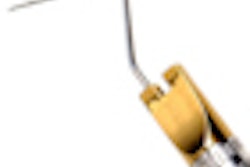A University of Georgia researcher has invented a new technology that can inexpensively render dental instruments, medical linens and clothing, face masks, even paper towels permanently germ-free (ACS Applied Materials & Interfaces, June 21, 2011).
The simple and inexpensive antimicrobial technology works on natural and synthetic materials. The technology can be applied during the manufacturing process or later, and it doesn't deteriorate after washing. Unlike other antimicrobial technologies, repeated applications are unnecessary to maintain effectiveness.
"The spread of pathogens on textiles and plastics is a growing concern, especially in healthcare facilities and hotels, which are ideal environments for the proliferation and spread of very harmful microorganisms, but also in the home," said Jason Locklin, PhD, the inventor, an assistant professor of chemistry in the Franklin College of Arts and Sciences and an assistant professor in the department of biological and agricultural engineering at the University of Georgia.
The antimicrobial treatment, which is available for licensing from the University of Georgia Research Foundation (UGARF), effectively kills a wide spectrum of bacteria, yeasts, and molds that can cause disease, break down fabrics, create stains, and produce odors.
"Similar technologies are limited by cost of materials, use of noxious chemicals in the application, or loss of effectiveness after a few washings," said Gennaro Gama, UGARF senior technology manager. "Locklin's technology uses ingeniously simple, inexpensive, and scalable chemistry."
The technology is simple to apply in the manufacturing of fibers, fabrics, filters, and plastics, he added. It also can bestow antimicrobial properties on finished products, such as athletic wear and shoes, and textiles in the office or home.
"The advantage of UGARF's technology over competing methods is that the permanent antimicrobial can be applied to a product at any point of the manufacture-sale-use continuum," Gama said. "In contrast, competing technologies require blending of the antimicrobial in the manufacturing process."
In addition, he noted, if the antimicrobial layer is removed from an article -- through abrasion, for example -- it can be reapplied by simple spraying the item again.
The antimicrobial was tested against many of the pathogens common in healthcare settings, including staph, strep, E. coli, pseudomonas, and acinetobacter, Locklin said. After just a single application, no bacterial growth was observed on the textile samples added to the culture -- even after 24 hours at 98.6° F (37° C). Moreover, in testing the treatment remained fully active after multiple hot water laundry cycles, demonstrating the antibacterial does not leach out from the textiles even under harsh conditions.
Thin films of the new technology also can be used to change other surface properties of both cellulose- and polymer-based materials. "It can change a material's optical properties -- color, reflectance, absorbance, and iridescence -- and make it repel liquids, all without changing other properties of the material," said Gama.



















